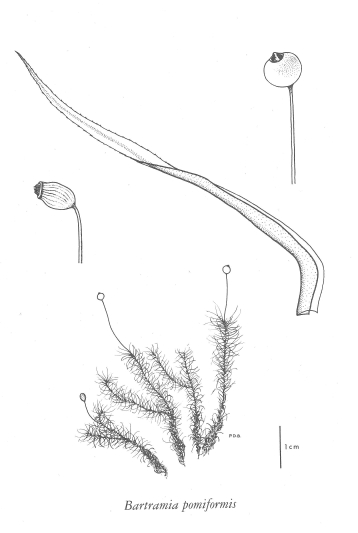E-Flora BC: Electronic Atlas of the Flora of British Columbia
Bartramia pomiformis Hedw.
apple-moss (bartramia moss) Bartramiaceae Species Account Author: Wilf Schofield Extracted from Some Common Mosses of British Columbia Introduction to the Bryophytes of BC
|
||||||||||||||
